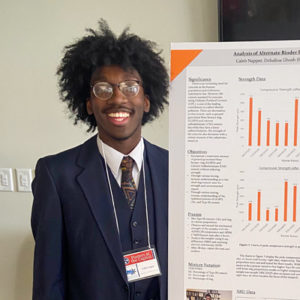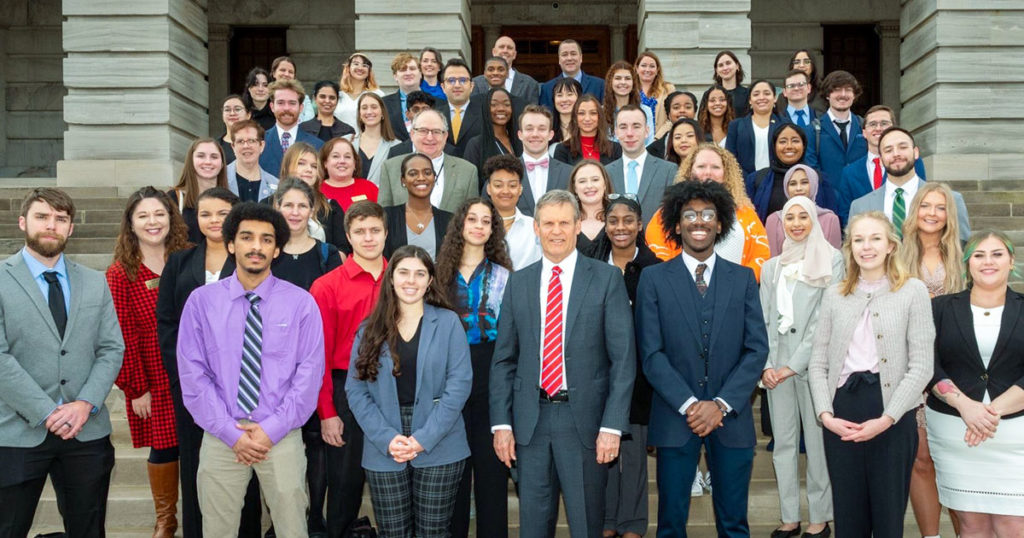Caleb Napper, senior in civil engineering, recently traveled to Nashville with 10 other UT students to present for the undergraduate research Posters at the Capitol event.
 Now in its 17th year, the event gathers undergraduate STEM researchers from across the State of Tennessee each February to convene at the State Capitol and share their projects with state legislators.
Now in its 17th year, the event gathers undergraduate STEM researchers from across the State of Tennessee each February to convene at the State Capitol and share their projects with state legislators.
Napper and fellow engineering student Tony George were joined at the February 15 gathering by Kathleen Coffman, Madlen Conley, Jada Laws, Hannah Morris, Tyler Myers, Skylar Sopko, Breanna Polen, Ellie Pritchard, Gillian Hertslet.
“Personally, I loved it,” said Napper. “I always like presenting, but it felt a little bit more special this time. I got to deliver important information to people who can actually enact change. I got to talk about engineering with the governor and several other representatives. I was grateful to honor my mentors, Dr. John Ma and Dr. Debalina Ghosh, on such an important stage.”
Napper presented his research poster “Analysis of Alternate Binder Properties in Optimized Concrete.”
“Concrete is the most frequently used building material on this planet” he explained. “As the Earth’s population continues to grow at an impressive rate, the need for stronger shelters, bridges, and structures to support them becomes greater.”
His presentation discussed advancements over the current standard for concrete, Ordinary Portland Cement (OPC), which is a leading contributor to carbon dioxide pollution. Alternatives include ground granulated blast furnace slag (GGBFS) and calcium sulfoaluminate (CSA) cement, with up to a 35% and 90% lower carbon footprint, respectively, than OPC. His research tested these materials.
“These tests showed us that the amount of GGBFS and CSA can be optimized to account for strength and carbon emissions,” he said. “Through this research and future work, I plan to contribute to lowering carbon dioxide pollution.”
